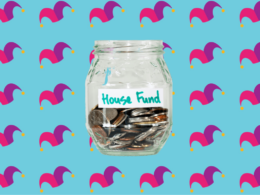Stock market crashes are expected, yet totally unpredictable. Historically, a stock market correction (a drop of 10% or more) happens about once every 1.8 years. While we know that another crash is coming, we also have no idea when it will happen.
Fortunately, there are plenty of moves you can make to prepare. Here are five ways I’m safeguarding my finances for when the bubble bursts.
Image source: Getty Images.
1. I’ll automatically invest for each 5% drop in the S&P 500
My logical brain knows that since I’m in my 30s, I should embrace future stock market crashes as a buying opportunity. But I also know that seeing my retirement accounts lose tens of thousands of dollars was a real gut-punch back in March 2020.
This time, I have a plan so that I’m not making investing decisions under stress: Currently, I practice dollar-cost averaging by investing $500 a month in my Roth IRA. But for every 5% drop in the S&P 500 index, I’ll invest an extra $500 in my Roth IRA.
That means if the index drops by 25% in June, I’ll contribute $3,000 between my regular $500, plus an extra $2,500. If that occurs, I’ll reach my $6,000 Roth IRA contribution limit early. I’ll continue investing that $500 a month in index funds that track the U.S. stock market no matter what, but I’ll invest the extra money in my taxable account if necessary.
2. I’m sticking with a six-month emergency fund
Losing a job or getting hit with a major unexpected expense right after the stock market has tanked can wreak havoc on your retirement planning. Having to cash out when your investments are down 20% to 30% could erase years of progress. Plus, if you’re withdrawing money from your retirement accounts before you’re 59 1/2, you’ll often owe taxes and a 10% penalty.
To protect myself from the bubble bursting, I have six months’ worth of living expenses stashed in a savings account. I’ll be honest: Building an emergency fund took me years, especially as a single person. If the idea of building a six-month emergency fund seems overwhelming, try thinking of it as a 26-week emergency fund. Tackling your goal one week at a time can make it a bit more manageable.
3. I have a few side hustles
After the widespread job losses of 2020, many personal-finance experts started touting the need for a 12-month emergency fund after years of saying six months was the gold standard. I’m sticking with my six-month emergency fund.
There’s really no amount that guarantees an emergency won’t devastate your finances. I feel comfortable with having six months of expenses saved because I do extensive freelance work on top of my full-time job. Having multiple sources of income reduces my odds of suddenly going to $0 of income overnight. I have more peace of mind that I won’t have to dip into investments if I lose my job right after the bubble bursts.
4. I’m keeping my down payment out of the stock market
I really want to buy a house, but I live in a part of Florida where home prices are up more than 20% year over year. Even though I’ve saved a pretty good down payment, I’m holding off to see if my local real estate market cools off a bit.
My down payment money is sitting in a savings account earning less than 1%. That’s frustrating, because that money could be making way more in the stock market. But I have no idea when the market will crash, so I’m sticking with the common rule of thumb that you should keep money you’ll need in the next five years out of stocks. No matter what happens in the stock market, my money will be safe for when the opportunity is right.
^SPX data by YCharts.
5. I’m investing like there isn’t a bubble
We’ll only know that we were in a stock market bubble after it bursts. That could happen now or a few years from now, which is why I invest each month in my 401(k) and Roth IRA no matter what. If I avoid investing now out of fear that the stock market is overpriced, I could miss out on several years’ worth of invaluable returns.
Instead of worrying about what my investments will do next month or even next year, I’m focusing on the long term. In any given decade, your chances of making money by investing across the U.S. stock market are well above 90%. Historically, the S&P 500 index has never produced negative returns over a 20-year period. I care way more about those odds than I do about the likelihood of a bubble popping tomorrow.
10 stocks we like better than Walmart
When investing geniuses David and Tom Gardner have an investing tip, it can pay to listen. After all, the newsletter they have run for over a decade, Motley Fool Stock Advisor, has tripled the market.*
David and Tom just revealed what they believe are the ten best stocks for investors to buy right now… and Walmart wasn’t one of them! That’s right — they think these 10 stocks are even better buys.
Stock Advisor returns as of 2/1/20
The Motley Fool has a disclosure policy.






